Tom Clancy - Locked On
Здесь есть возможность читать онлайн «Tom Clancy - Locked On» весь текст электронной книги совершенно бесплатно (целиком полную версию без сокращений). В некоторых случаях можно слушать аудио, скачать через торрент в формате fb2 и присутствует краткое содержание. Год выпуска: 2011, ISBN: 2011, Жанр: Триллер, на английском языке. Описание произведения, (предисловие) а так же отзывы посетителей доступны на портале библиотеки ЛибКат.
- Название:Locked On
- Автор:
- Жанр:
- Год:2011
- ISBN:9781101566466
- Рейтинг книги:3 / 5. Голосов: 1
-
Избранное:Добавить в избранное
- Отзывы:
-
Ваша оценка:
- 60
- 1
- 2
- 3
- 4
- 5
Locked On: краткое содержание, описание и аннотация
Предлагаем к чтению аннотацию, описание, краткое содержание или предисловие (зависит от того, что написал сам автор книги «Locked On»). Если вы не нашли необходимую информацию о книге — напишите в комментариях, мы постараемся отыскать её.
Locked On — читать онлайн бесплатно полную книгу (весь текст) целиком
Ниже представлен текст книги, разбитый по страницам. Система сохранения места последней прочитанной страницы, позволяет с удобством читать онлайн бесплатно книгу «Locked On», без необходимости каждый раз заново искать на чём Вы остановились. Поставьте закладку, и сможете в любой момент перейти на страницу, на которой закончили чтение.
Интервал:
Закладка:
Granger said, “I don’t know if Hendley will like this.”
“Let’s ask forgiveness instead of permission.”
“Like I said, it’s your neck.”
“Roger that. I’ll be in touch when I get back to Pesh. Don’t stress if you don’t hear from me for a while, it may be a week or two.”
“I understand. Good luck.”
The city of Miran Shah is the capital of North Waziristan, which lies within the Federally Administered Tribal Areas of western Pakistan, not far from the Afghan border. The area is not under the control of the Pakistani government in Islamabad, though there is a small and often harassed Pakistani Defense Force base here.
The town and the region, including areas reaching far past the irrelevant Afghan border to the west, are under the control of the Haqqani network, a massive insurgent group that is closely allied with the Taliban.
Jalaluddin Haqqani fought the Russians in Afghanistan in the 1980s and became a warlord of increasing power and scope. His sons followed in their father’s footsteps, and they had a hand in virtually every aspect of life here in North Waziristan that was not snuffed out by American unmanned aerial vehicles that patrolled the sky above, waiting to be cleared hot for a missile launch.
Their international reach, their dozens of covert insurgent camps, and their close ties with the Pakistani intelligence service made the Haqqani family a natural partner of Riaz Rehan throughout the years. He had used their territory and facilities to train fighters and operatives for missions in India and Afghanistan, and he had reached out to them again recently, asking for their assistance in training a large cell of foreign fighters for a mission.
The Haqqani leadership accepted the request of Joint Intelligence Miscellaneous to send the men, and Rehan himself came along to oversee the initial phases of the training.
Though he had no military or insurgent training whatsoever, Russian rocket entrepreneur Georgi Safronov was the leader of the unit of Jamaat Shariat forces who arrived at the Haqqani camp near Boya, west of Miran Shah, in the third week of October. With him was the man he knew as General Ijaz, as well as his unit of fifty-five Dagestani rebels. The huge force of foreigners was outfitted by the Haqqani forces and billeted in a large cave complex dug into the walls of a hillside.
Much of the training itself took place inside the man-made caves and under corrugated tin roofs painted to look like dirt and farmland so as not to attract the attention of U.S. drones, but some team tactics training did take place in fields and on hillsides. The UAVs were not invisible; specially trained spotters were posted to keep an eye out for America’s “eyes in the sky.” But the UAVs were stealthy enough that Rehan himself ordered the Haqqani network to place absolute priority, not on the quality of the training of the foing of treigners, but on maintaining the security of the operation.
Rehan did not really care if the Dagestani insurgents had the talents necessary to take over and hold a space launch facility in Kazakhstan. No, he was instead interested only in their ability to succeed in a mission here in Pakistan that they would need to undertake to gain control of the two nuclear weapons. If they lost half their number while executing this mission, it was of no great concern to Rehan.
His only concern was that the world learned that nuclear bombs had been stolen out from under the Pakistanis’ noses by foreign terrorists. He felt certain that this would lead to the disintegration of the Pakistani government within days or weeks.
The Haqqani network took Rehan’s order to ramp up security seriously. They sent spies into the villages and neighborhoods between Miran Shah and Boya, keeping an eye out for anyone interested in the movement of men and material. Little happened in North Waziristan without Haqqani knowing about it, but now there was virtually nothing that could avoid detection by the powerful force.
The Pashtun fighters found the Dagestani fighters to be quite good with their weapons and extremely motivated individuals. But they lacked unit cohesion and this was something that Haqqani’s people had developed by necessity in the decade they had been fighting coalition forces over the border.
The only member of the unit who did not know how to handle a gun, or handle himself in any physical sense, was their leader. Safronov had adopted the nom de guerre Magomed Dagestani, Mohammed the Dagestani, but although he now possessed a name that conveyed his intent, he lacked any martial abilities to back it up. But he was smart and motivated to learn, so slowly the Taliban in the cave complex taught him how to use handguns and rifles and grenade launchers and knives, and by the end of the first week he had come a long way.
Rehan was in and out of the camp, splitting time between his home in Dubai, his office in Islamabad, and the cave complex. All the while, Rehan encouraged the Dagestanis to stay motivated for the hard work ahead and Safronov to stay strong and committed to the action.
34
The third and final presidential debate was held in Los Angeles, at the Edwin W. Pauley Pavilion on the campus of UCLA. It was a more formal affair than the last encounter; this time the two men would be at lecterns in front of a panel of questioners, reporters from the big media outlets as well as one of the wire services.
It was an open forum; there was no particular theme to the event, with the idea that the biggest issues in the last three weeks of the campaign would naturally be discussed. In theory, this would lead to a few topics that would get passionate attention from the candidates, but in actuality, other than a few questions on economic bailouts of foreign nations, China’s massive increase of military expenditures, and rising gas prices, one topic was at the forefront.
The President’s decision to try Saif Yasin in the federal system got the lion’s share of attention, as well as candidate Jack Ryan’s vocal opposition to this.
With the subject of the Emir naturally came the subject of Pakistan. The Islamabad government had spent the past decade taking billions of dollars annually from the United States while simultaneously working at cross-purposes with American military and intelligence efforts, and the safe haven that western Pakistan had become had given much aidw and comfort to the organizations that committed terrorist atrocities around the world. Kealty’s plan to influence Pakistan to rehabilitate and provide real support for U.S. interests was, essentially, to double down. While he threatened to cut off aid to Islamabad unless the situation improved, covert funding and support for the ISI and PDF actually increased as the White House tried to buy off commanders and departments that held influence over strategy.
Ryan’s plan, like most of his ideas when compared to Kealty’s, stood in stark contrast. When asked by the AP reporter on the panel what he would do to the funding levels of the Pakistani intelligence and military services, he replied, succinctly, “Cut it. Cut it and use some of that money to support our great friends and allies in the region, India.”
He’d been saying this on the campaign trail for some time, and he’d been taking a beating for it in the media. The American press spun his support for India over Pakistan as stirring up an old conflict by putting U.S. strength behind one power over another, despite Ryan’s retort that Pakistan supports terrorism against the United States while India does not.
“Of course we want to put our strength behind our friends and pull support for our enemies. Pakistan does not have to be our enemy,” he said into the cameras at the Pauley Pavilion, “but that has been their choice. When I return to Washington, I will turn off that spigot of support until Islamabad shows us that they can control their urges and combat Islamic terrorism in India and the West.”
Читать дальшеИнтервал:
Закладка:
Похожие книги на «Locked On»
Представляем Вашему вниманию похожие книги на «Locked On» списком для выбора. Мы отобрали схожую по названию и смыслу литературу в надежде предоставить читателям больше вариантов отыскать новые, интересные, ещё непрочитанные произведения.
Обсуждение, отзывы о книге «Locked On» и просто собственные мнения читателей. Оставьте ваши комментарии, напишите, что Вы думаете о произведении, его смысле или главных героях. Укажите что конкретно понравилось, а что нет, и почему Вы так считаете.
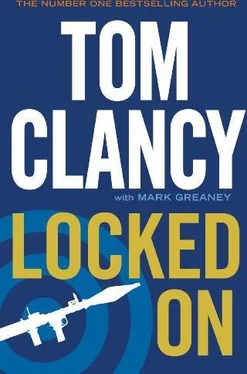
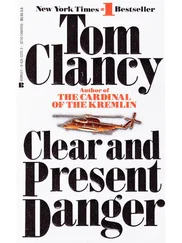

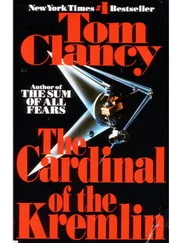
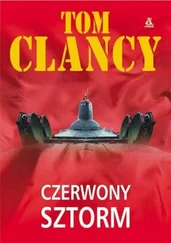
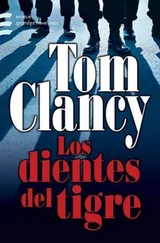
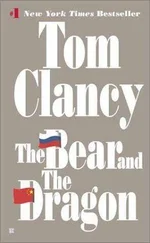
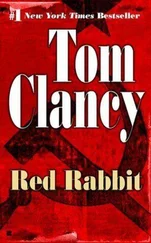


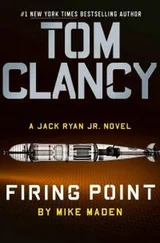
![Александр Ирвин - Tom Clancy’s The Division 2. Фальшивый рассвет [litres]](/books/417744/aleksandr-irvin-tom-clancy-s-the-division-2-falsh-thumb.webp)